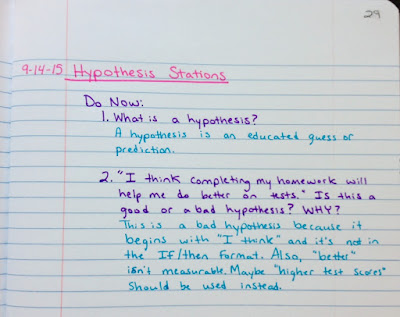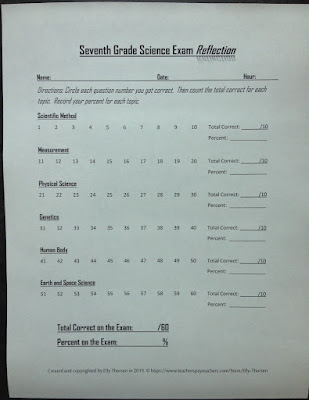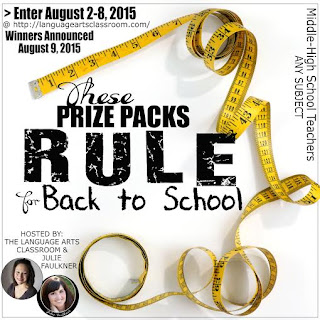What if I told you there is an easy way to increase student engagement in your lessons without a fancy song and dance? There is! Students need to know WHY they are learning the material and how it relates to their lives.
Many teachers begin a lesson by sharing the daily plan and objective. For example, the daily plan might be “Take notes on the scientific method and complete the Steps of the Scientific Method Activity.” The objective might be “Students will be able to list the steps of the scientific method in order and identify each step in an experiment.” Before diving into the meat of the lesson, teachers should share one more thing: why students need to know this. When students know why they are learning something and understand how the content actually matters in their lives, they become much more invested in the lesson and retain more information.
Many teachers begin a lesson by sharing the daily plan and objective. For example, the daily plan might be “Take notes on the scientific method and complete the Steps of the Scientific Method Activity.” The objective might be “Students will be able to list the steps of the scientific method in order and identify each step in an experiment.” Before diving into the meat of the lesson, teachers should share one more thing: why students need to know this. When students know why they are learning something and understand how the content actually matters in their lives, they become much more invested in the lesson and retain more information.
For the why piece of the scientific method lesson I might
say something like “The scientific method is a way of looking at problems and
finding solutions. It’s a way of thinking. Being able to think scientifically
will help you solve your own real life problems. It will also help you conduct
experiments in this class and in your future science classes.”
Explaining the why should not look like “The steps of the
scientific method will be on your unit test.” While, yes, that does explain a
reason why students should know something, it is not a meaningful reason for
their lives. They have no reason to be interested in the lesson because they
don’t know why it matters in their lives. They have no reason to retain the
information after the test.
Sometimes it is very easy to come up with a reason why
students should know something. Why should students know about lab safety?
Well, durrrr so they don’t get hurt. Why should students know about the metric
system? They should know the metric system because if they do any kind of
traveling outside of the country they’ll need it for something as basic as
driving the right speed or knowing to pack warm clothes when they look at
the temperature in Celsius.
Unfortunately, it can be difficult to come up with a reason for learning some of the required material students have to learn (which is a whole other topic of conversation). For material like that, I bring in their distant future goals. At the beginning of the year, I have my students complete goal posters about what they want to be in the future and how science can help them reach their goals. (Get the goal posters for free here.)
Some students have goals that relate directly to science—I want
to be a veterinarian. Those are always easy to bring in the why of each lesson.
They need to know biology for how the body works. They need to know chemistry
so they can administer medicine safely and effectively to animals.
Other students have goals that aren’t directly related to
science—“I want to be a professional football player.” For those students,
science is important so they know biology to keep their bodies healthy during
training and prevent injuries. They need to know chemistry so they understand
the dangers of performance-enhancing drugs that could potentially be available.
Also, before sports stars get acknowledged by a professional team they have to
play on a team in high school or college. In order to play on those teams, they
have to be academically eligible. If they can’t understand science well enough to
pass a class, they won’t be playing in any games.
A few students don’t know what they want to be when they
grow up, which is totally fine. For those students, I tell them they should
write something like “I don’t know what I want to be yet, but I do know I want
to have many options when I graduate.” By doing well in science, they won’t be
limiting their career options because they have a weak understanding of science
concepts. If they don’t understand the science concepts in middle school, that
will likely compound in high school. Those gaps of understanding will
negatively affect their ability to succeed in required college science classes and
get the degree needed for their career.
Whenever possible, explain the reasons why students are
learning the material in your lessons. Link the lesson to their lives and
future goals. Get the students in on it too by asking them how the material connects
to them. Ever since I began doing this in my classes, I have noticed my
students are more interested in lessons, ask better questions, have fewer
behavior problems, and retain more of the information.


















































